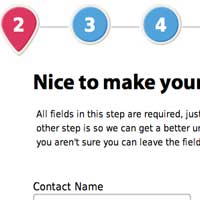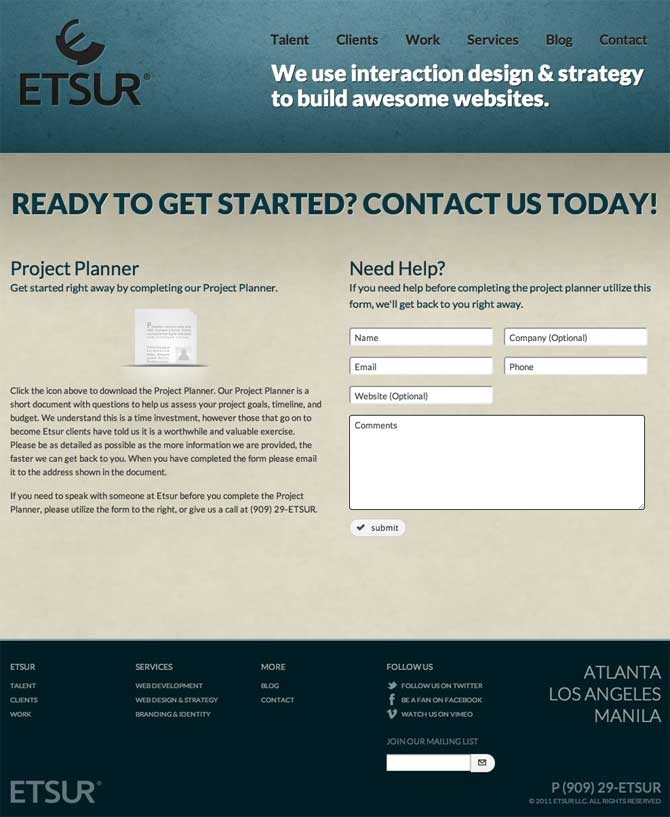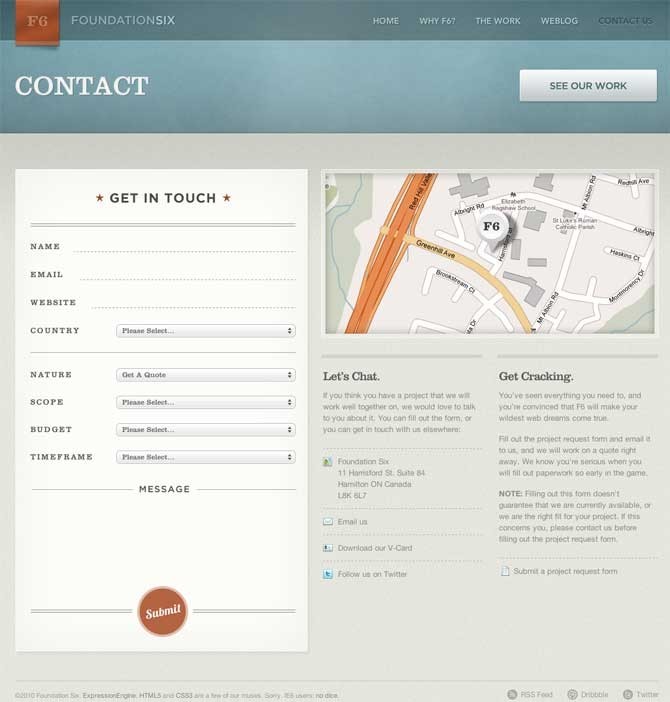A Client Questionnaire, Who What Where and Why
Category: Web Business - Published: Feb 06, 2012 - Tags: design clients contracts
Every freelancer or business owner needs a client questionnaire, also known as a project planner. The benefits are numerous, but which questions to add and what to omit can lead to a client walking away or not giving you enough information. Ultimately, a client questionnaire is used to skip that first long phone call or meeting but there are other benefits
Making potential clients fill out a questionnaire has many benefits including:
- Weed out people “just looking” or price checking to get the best deal
- Find out the client contact’s knowledge of design and the design process
- It lets clients know they are not purchasing a product off the shelf (a website is a whole lot more than that)
- Gets the client thinking about what they actually need
- Saves you time asking the same questions from every client
- Gives you a starting point for your first meeting
Questions
What questions to ask can take a little bit of trial and error to figure out. You don’t want to bombard a potential client with a hundred questions to fill out, they may look elsewhere or skip most of it. On the flip side, not asking enough or asking the wrong questions means you will have more to talk about during your meeting.
Here is a sample questionnaire. I stuck to the basics so that clients will be more likely to actually fill the whole thing out.
1. What do you want your website to do for your organization? (business objectives) It can be more than one thing.
2. Describe your organization in three sentences or less.
3. Who are your top 3 competitors? (even non-profits have competition)
4. Who will be the primary contact for this project and who else will be involved?
5. Where will the content for the website (the most important part) come from? Content includes: logo, branding material, written copy for the website, tagline and marketing slogans, color scheme, photos, product information, etc. If you don’t have any of these, mention it below.
7. What special consideration or features does this website need to have?
7. What is the budget for this project?
8. How do you plan on getting traffic to your website?
9. What current advertising are you doing?
Make It Like Any Other Conversion
Getting a potential client to contact you is the first step toward getting paid. So treat it like any other conversion (it is important!). This may make some people shy away from using a client questionnaire in favor of direct contact, in fear of losing a client. But again, if you work for yourself, you just don’t have the time to answer every question and write up estimates for every person you talk to, since a lot of them are not ready to commit, just looking.
For a freelancer this page is the most important one on your website. All traffic funnels here.
The Lab does a great job with their client questionnaire. Showing the steps in the process allowing clients to see their progress, so they’ll be more inclined to finish.
When In Doubt Have Both
If you don’t want to risk losing out on a potential client you can always have the traditional contact form, with email address, Twitter, and phone number there to make it very convenient to get ahold of you. Although giving people more options is not always better. Most web studios that I’ve looked at have a pdf or Word document to download, fill out and send back. Personally, I prefer the web based form but it takes time to put together.
Pricing
Some people don’t like having their prices listed on their website but adding a dropdown of prices to your client questionnaire is a great way to eliminate the people looking for a $100 website. Bargain hunters never make for good clients so just eliminate them from the beginning and spend more time on the clients who actually want to pay for good work.
I love how Foundation Six has their contact page set up. They have a project request form but they also have a mini-questionnaire made of four select forms. Which give them an idea of the nature of the inquiry and it doesn’t take the person long to fill out.
For pricing, you don’t have to set specific prices but make sure to set the lowest price you will go for a basic website. This saves you the time of talking to cheap clients. If you do do work by the hour you may want to include that price as well. Who knows, a client might see some great work on your site and think you charge a lot more than you actually do. Better to be upfront about costs, so the clients you get will be willing to pay.
Here is another example for IDesignStudios. It does feel a little lengthy but the form covers all the basics.
A lot of times the contact page is the last thing you finish when you complete your portfolio. But make sure to do it right because it is that last step in which a client contacts you.





